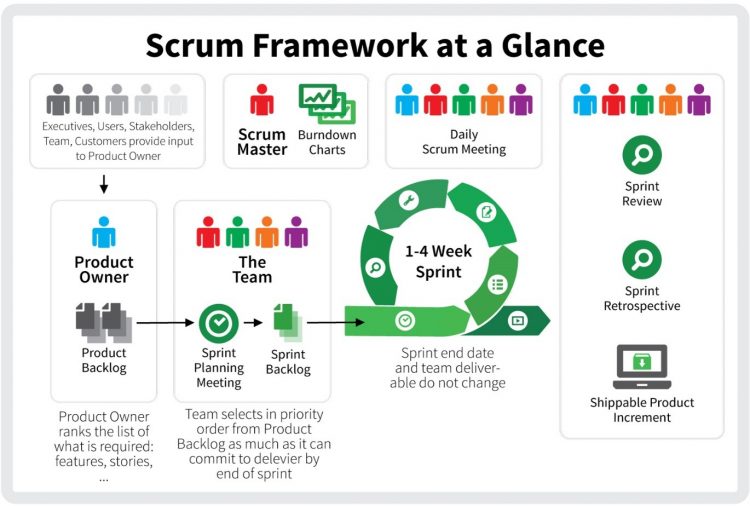Agile and Scrum for Project Management
Published by Pavel Nakonechnyy on (updated: ) in Project Management.
Agile
Agile is a group of methods and tools that are used when it is impossible to make accurate estimates, stable plans, and predictions. Agile focuses on adaptive, iterative, and evolutionary approach. It helps with transformation, innovation and sustaining performance over time.
Agile manifesto was created in software development sphere, but you can use it elsewhere. Agile principles impact the following part of project management:
- Stakeholder management (and stakeholder engagement a bit)
- Requirements management
- Project delivery and development
- Knowledge management
- Quality management
- Project team organization
Using agile tools and techniques can help you to:
- Organize and plan
- Communicate (within the team and with the rest of your organization)
- Continuously improve the way you work
- Get support from management
Agile Tools and Techniques
Common Agile tools and techniques are:
- Collocation
- Dedicated teams
- Relative estimating
- User stories
- Velocity
- Burndown charts
- Definition of done
There is a group of techniques used to optimize project development and delivery, manage project quality:
- Frequent inspection of the product and adaptation to the changes and input during the project
- Aligning development with customer needs and organizational goals
- Colocation of resources to the same work space
- Self-organization and accountability
Each team should adopt a combination of techniques depending of the project and team itself.
- Becoming a team player
- Elimination of “waste” and “ceremony”
- Empirical demonstration of results
- Customer is always present
- Focus on key planning events: product planning, release/feature planning, iteration planning, sprint review, and stand-ups
Scrum
Scrum is one of the most common agile frameworks. It relies on assembling teams of people with varying responsibilities and domains working closely together. Traditional approach (known as waterfall) relies on project being passed between teams sequentially.
In waterfall projects PM tries to plan every aspect of a project beforehand. For example, it’ll take 3 weeks for programmers to code Front-End. In Scrum, instead, teams focus on what can be done and delivered in the nearest future.
This gives Scrum shorter feedback cycles and allows to take immediate action when issues arise.
Other Scrum features include:
- Defining the roles
- Organizing work
- Prioritizing